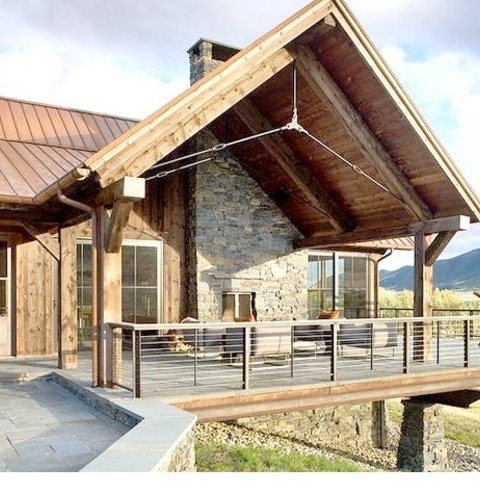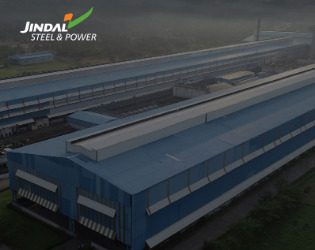#Structural steel
Text
What is the classification of steel by use?
Structural steel
(1) Structural steel for construction and engineering is referred to as construction steel, which refers to the steel used to make metal structural parts on buildings, Bridges, ships, boilers or other projects. Such as carbon structural steel, low alloy steel, reinforced steel and so on.
(2) Structural steel for mechanical manufacturing refers to steel used to manufacture structural parts on mechanical equipment. This kind of steel is basically high-quality steel or high quality steel, mainly high-quality carbon structural steel, alloy structural steel, easy to cut structural steel, spring steel, rolling bearing steel and so on.
Tool steel
Generally used to manufacture a variety of tools, such as carbon tool steel, alloy tool steel, high-speed tool steel and so on. According to the use can be divided into cutting tool steel, die steel, measuring steel.
Special steel
Steel with special properties, such as stainless acid-resistant steel, heat-resistant non-peeling steel, high resistance alloy, wear-resistant steel, magnetic steel, etc.
Specialty steel
This refers to the professional use of steel in various industrial sectors, such as automotive steel, agricultural machinery steel, aviation steel, chemical machinery steel, boiler steel, electrical steel, welding rod steel and so on.
2 notes
·
View notes
Text

Strength, Adaptability, and Safety with Structural Steel Buildings
Renowned for their strength and adaptability, structural steel buildings have become a popular choice across various industries. These buildings are characterized by their robust framework composed of steel members, including beams, columns, and trusses. The inherent properties of steel, such as high tensile strength and ductility, make it an ideal material for constructing structures that can withstand substantial loads and environmental stresses. One of the key advantages of structural steel buildings is their modular design, allowing for easy expansion or reconfiguration as needs evolve.
0 notes
Text
Forge strong foundations with Structural Steel from https://www.steelcoqatar.com/product/structural-i-beams-h-beams-qatar. Our beams uphold the pillars of robust construction.
0 notes
Text
In the realm of construction, every building's strength and stability hinge upon a fundamental yet often overlooked component: wall studs. These unassuming vertical members serve as the backbone of structural framing, providing essential support for walls, ceilings, and roofs. This article delves into the world of wall studs, exploring their uses, requirements, applications, advantages, disadvantages, limitations, key considerations in construction, and related topics.
The Role and Importance of Wall Studs
Wall studs, typically made from wood or metal, play a crucial role in maintaining a building's structural integrity. They serve as the framework upon which walls are constructed, creating a sturdy and stable foundation for the entire structure. Wall studs also provide a framework for insulation, electrical wiring, and plumbing, making them indispensable for both residential and commercial constructions.
Uses in Construction
Load Bearing: Wall studs act as load-bearing elements, transferring the weight of the structure down to the foundation. This is particularly essential in multi-story buildings where the loads accumulate vertically. They support the vertical load of the structure, ensuring that it remains stable and safe.
Partitioning: Studs divide interior spaces into rooms and corridors, allowing for flexible floor plans that cater to various functional and aesthetic needs. This flexibility enables architects and designers to create versatile living and working spaces.
Support for Finishes: Wall studs provide a base to attach interior and exterior finishes such as drywall, plaster, siding, and sheathing. These finishes not only enhance the visual appeal of the building but also contribute to its overall insulation and weather protection.
Sound Insulation: Double-studded walls with an air gap can enhance sound insulation, making them beneficial in settings where noise reduction is vital. This feature is particularly valuable in commercial spaces, hotels, and residential buildings.
Read Continue
0 notes
Photo

Modern Exterior - Exterior
Idea for a small, contemporary, gray, and wood exterior house
0 notes
Photo

Porch Front Yard
Large transitional stone front porch photo with a roof extension
0 notes
Text
Boston Rooftop Deck

Deck - small modern rooftop privacy deck idea
0 notes
Text

Jindal Steel and Power Limited (JSPL), one of India's primary and integrated steel producers, is one of the most respected brands in the B2B steel market in India. As housing in the country grows exponentially in the recent years, the company has envisioned the opportunity to foray the retail market with the launch of Jindal PantherTM TMT Rebars. Panther has a strong and confident personality and a single clear objective: provide emerging Indians with state-of-the-art TMT Rebars for their housing development needs, which will no doubt have a positive impact in the general growth of the country.
Visit:-
1 note
·
View note
Text
Spantec Structural Steel - Strength and Versatility | Jay Jay Building
Explore Spantec structural steel solutions at Jay Jay Building. Our high-quality steel products offer strength and versatility for your construction projects. Discover the benefits today.
0 notes
Photo

Contemporary stone exterior home idea with a metal roof
Idea for a modern home with a stone façade and a metal roof
0 notes
Photo

Small minimalist gray three-story wood exterior home photo
Small gray minimalist wood exterior house image
0 notes
Text
Deck in Boston

Ideas for a small, contemporary rooftop deck renovation that includes a pergola
0 notes
Link
0 notes
Photo

Pool - Lap
An illustration of a modern rectangular lap pool made of concrete for a side yard.
0 notes
Text
In the realm of civil engineering and materials science, quality assessment and control is paramount to ensure the safety, longevity, and structural integrity of constructions. One essential tool in this endeavour is the Sieve Analysis Test.
This test plays a crucial role in determining the particle size distribution of aggregates, both coarse and fine, offering insights into the material's engineering properties.
In this comprehensive article, we delve into the intricacies of the Sieve Analysis Test, exploring its purpose, advantages, disadvantages, uses, and related concepts, and providing a step-by-step guide to its execution.
Understanding the Sieve Analysis Test
The Sieve Analysis Test, often referred to as the Gradation Test, is a fundamental procedure used to quantify the distribution of particle sizes in aggregates. Aggregates, including materials like sand, gravel, and crushed stone, constitute the foundation of various construction projects, including roads, buildings, and other critical infrastructure.
The properties of these aggregates, particularly their particle size distribution, significantly influence the workability, strength, and overall performance of concrete and other construction materials.
The Sieve Analysis Test involves passing a sample of the aggregate through a series of progressively finer sieves (meshed screens), each having specific sieve openings. As the material is sieved, particles larger than the sieve openings are retained on the sieve, while smaller particles pass through.
The resulting data offers valuable insights into the grading of the material, which is the distribution of particle sizes within the aggregate.
Advantages of the Sieve Analysis Test
The Sieve Analysis Test provides several advantages that contribute to its widespread usage in the construction industry:
1. Quality Control
Construction projects require a high level of quality control. By analyzing the particle size distribution, engineers and quality control personnel can assess the consistency and quality of aggregates. This helps ensure that the aggregates used in construction meet the required specifications, minimizing the risk of structural failure and enhancing the overall durability of the project.
2. Performance Prediction
The particle size distribution of aggregates has a direct impact on the properties of concrete and other mixtures. Engineers can use the Sieve Analysis Test results to predict the behaviour of these materials in real-world applications. This information is vital for designing mixtures with optimal workability, density, and strength, ensuring the long-term performance of constructed structures.
Read more
#concrete#construction#civil engineering#structural systems#structural design#structural analysis#structural steel
0 notes
Link
Asia Pacific is expected to witness the highest growth in the structural steel market during the forecast period...
0 notes